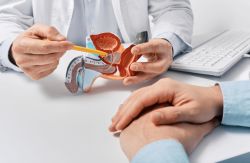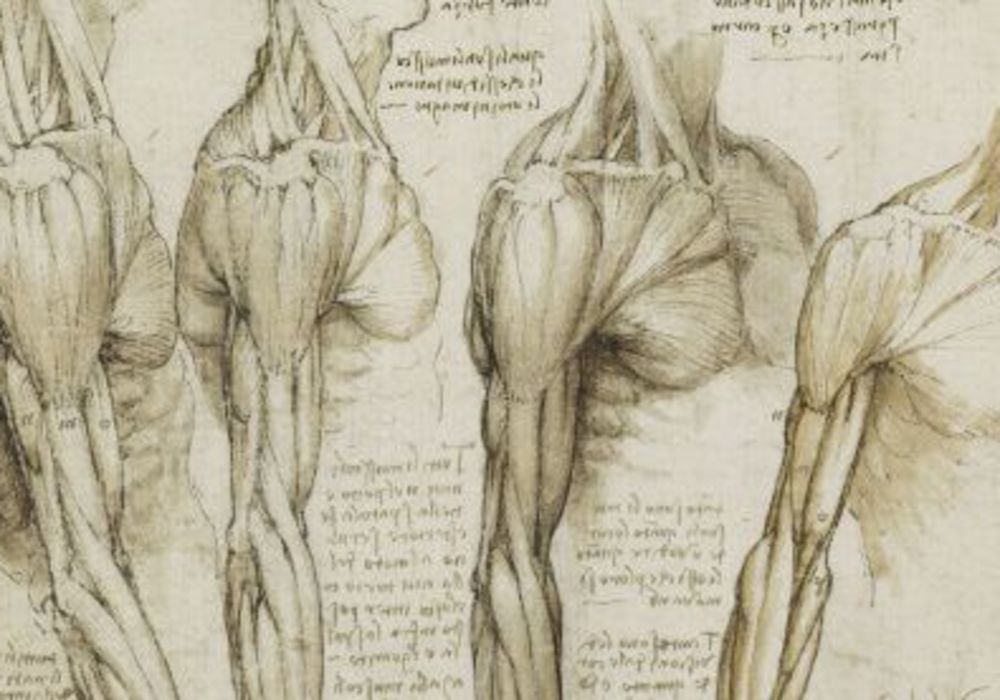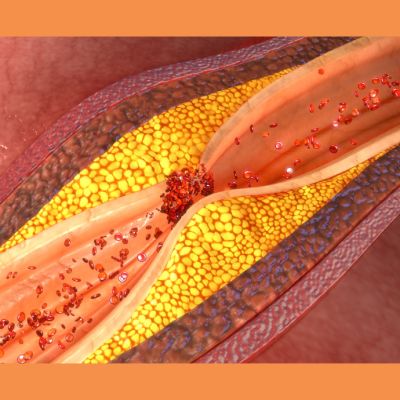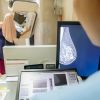An exhibition that sheds new light on Leonardo da Vinci’s anatomical work opens on 2 August 2013 at The Queen’s Gallery, Palace of Holyroodhouse, Edinburgh, Scotland. Long renowned as one of the finest artists of the Renaissance, Leonardo was also one of the greatest anatomists the world has ever seen. Almost 500 years after his death, "Leonardo da Vinci: The Mechanics of Man", part of the Edinburgh International Festival, uses 21st-century technology to explore the modern relevance of Leonardo’s anatomical research. Thirty sheets of his groundbreaking investigations into the workings of the human body will go on display alongside images prepared using the latest medical technology. The juxtaposition shows how far-sighted Leonardo’s work was, and how relevant he remains for anatomists today.
The artist began researching the human body to ensure that his paintings were as ‘true to nature’ as possible, but he soon conceived the idea of writing an illustrated treatise on anatomy. This led him to dissect more than 30 corpses in hospitals and medical schools, filling hundreds of pages of his notebooks with detailed sketches, the like of which had never been seen before. His discoveries could have transformed European knowledge of anatomy. But on Leonardo’s death in 1519, his anatomical studies remained among his personal papers, and they were lost to the world for hundreds of years. Had they been published at the time, they would undoubtedly have been the most influential work on the human body ever produced.
Leonardo’s finest work dates from the winter of 1510-11, when he dissected some 20 corpses at the medical school of the University of Pavia in collaboration with the professor of anatomy, Marcantonio della Torre. On the 18 sheets of what is now known as Leonardo’s ‘Anatomical Manuscript A’, the artist crammed more than 240 individual drawings and notes running to more than 13,000 words in his distinctive mirror-writing. Anatomical Manuscript A, which will form the centrepiece of the exhibition, has never before been displayed in its entirety in the UK.
Almost every bone in the human body and many of the major muscle groups are illustrated in Anatomical Manuscript A, requiring Leonardo to convey a huge amount of three-dimensional information in static, two-dimensional drawings. The range of graphic techniques that he developed to meet this challenge foreshadows modern medical imaging to an astonishing degree. Leonardo often used skills that he had acquired through other work to achieve his goals. From architecture, he employed the principles of elevation, plan and section. From engineering, he took the ‘exploded view’ to portray structure and movement, pulling elements apart to show how they fit together. Leonardo’s drawings will be displayed alongside CT and MRI scans, computer simulations and 3D film of the body, to demonstrate how close he came to 21st-century medical thinking.
In one masterful sheet, Leonardo demonstrates the layered structure of the hand through four dissections. He begins with the bones, adds the deep muscles of the palm, and then applies the first and second layers of tendons. Anatomists today use exactly the same sequence of images when trying to understand the hand. Displayed alongside Leonardo’s work will be an animated computer simulation that replicates the artist’s layering technique. A film of a dissected hand in high-definition 3D will also allow exhibition visitors to appreciate the subtlety of the intricate structure.
Leonardo’s last and greatest anatomical campaign was an investigation of the heart. Dissecting the hearts of oxen, he recorded the form of the chambers, valves and coronary vessels. He made a glass model of the aortic valve to study the flow of blood, but it was not until the 1980s that the pulsing image of a real-time MRI scan allowed anatomists to confirm that Leonardo’s description of the heart’s action had been almost entirely correct. Leonardo thus came very close to discovering the circulation of the blood, a century before William Harvey – but it was with the heart that his anatomical investigations came to an end.
Exhibition curator Martin Clayton, said, ‘Royal Collection Trust’s association with the Edinburgh International Festival, in a year when its programme focuses on the theme of technology, has prompted us to examine the modern relevance of Leonardo’s astonishing drawings. For the first time we will be displaying the artist’s works alongside stunning examples of medical imaging, showing how the concerns and methods of the world’s leading anatomists have changed little in 500 years, and how truly groundbreaking Leonardo’s investigations were.’
The exhibition Leonardo da Vinci: The Mechanics of Man is at The Queen’s Gallery, Palace of Holyroodhouse, 2 August – 10 November 2013, and is part of the Edinburgh International Festival. The exhibition will be open late throughout August, until 20:00 on Wednesdays, Fridays and Saturdays.
Latest Articles
Anatomy
An exhibition that sheds new light on Leonardo da Vinci’s anatomical work opens on 2 August 2013 at The Queen’s Gallery, Palace of Holyroodhouse, Edinb...























